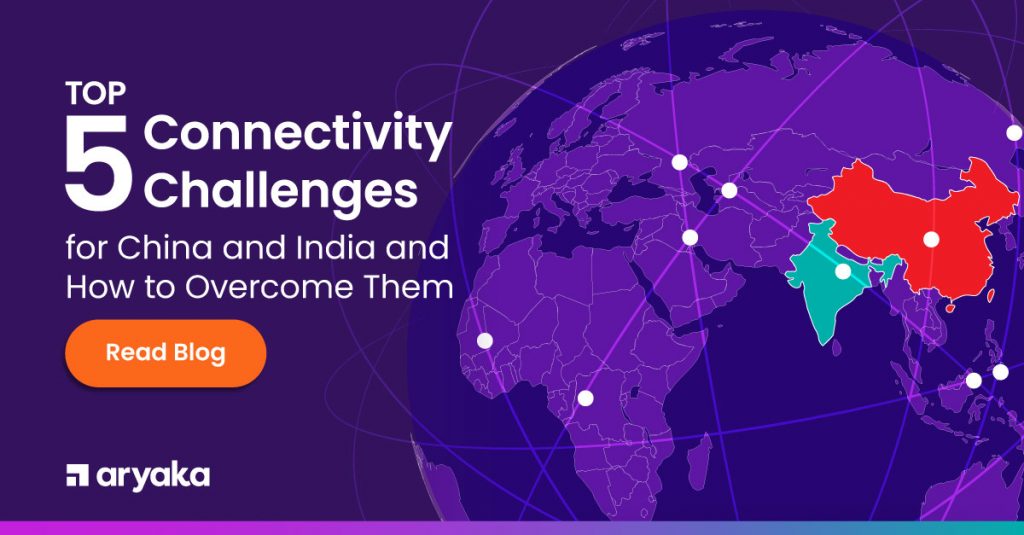7 WAN Insights: How COVID-19 Changes Enterprise Network-Traffic-Patterns (Update)
Some weeks ago, Paul and I published a quick analysis of how COVID-19 is impacting enterprise network-traffic-patterns. That blog was written when -at least for most of the Western world- the most crippling and limiting limitations started to be mandated by national and local governments. And so, three weeks later, I decided to look into enterprise traffic trends again, in order to see if any changing patterns had emerged At Aryaka, we can tap into WAN usage statistics from hundreds of organizations around the world. This data lake allows us to accurately observe changing traffic trends such as the predictable surge of video collaboration as well as the fact that employees are working more hours as they work remotely, in particular during weekends. So, let me summarize some enterprise network traffic mega-trends again, nearly five weeks into our “Shelter in Place” mandate both in California and in many other locations.
1. Video conferencing remains at an elevated high level
Video collaboration traffic (i.e., 8×8, BlueJeans, Zoom, Microsoft Teams, and more) transported across the Aryaka’s global core in order to guarantee a superior end-user experience remains at a historical high since the start of the enforcement of the shelter-in-place ordinances. While we have heard that many other enterprises have asked their remote employees to now avoid video conferencing at large in order to protect their VPN infrastructures and the resulting degraded user experience due to traffic overload, clearly Aryaka enterprise customers found that their infrastructure proved resilient as it handled the new video communication traffic loads.

2. More high-tech workers have left the campus

The graph at the left is the WAN usage profile of a US West Coast Software company. Campus traffic has further wound down now that 100% of the employees are in their 5th week of working from home. Aryaka’s Cloud-First SDWAN enables this company to pivot from working from the campus to the home instantly.
3. Knowledge workers remain working from home
The graph below is from a Fortune 100 company using Aryaka’s Secure Remote Access solution for their remote users, which now in the USA accounts for basically 100% of their workforce. Since the end of February, their mobile usage jumped by almost 3X as COVID-19 made its way around the globe. But, note that in the case of this company, with a very significant user base in China, the situation in China is now seemingly slowly returning to normalcy, reflected in both the bandwidth and user numbers working remotely that have started to decrease.

4. Some employees have shifted their activities and priorities
The chart of the company below shows a significant drop-off in the number of change and modification requests handled by its engineering team. One hypothesis could be that this is pointing at a profound shift in the mix of activities pursued by the engineers in this company. Perhaps instead of chasing daily operational issues, there may be currently more time to figure out longer-term strategies and learning.

5. Manufacturing companies just keep humming

Dozens of manufacturing companies continued to show mostly flat WAN traffic over the last couple of months. These companies have built a resilient global network infrastructure, leveraging Aryaka’s Cloud-First WAN, which just keeps humming and prevents disruption. We observed this trend several weeks ago, and we are glad to observe these companies continue to operate without any disruption to their usual traffic patterns, quite possibly indicating their business has not been impacted.
6. Some companies remain shutdown
 We all know that some businesses have slowed down considerably and even closed entirely, and this has been a tragic result of this crisis. These are typically smaller companies with labor-intensive operations and services that require the on-site presence of employees and find it impossible to offer their services with a remote workforce model. However, we seem to observe -and hope- the worst is now behind us. It is early to tell yet, but it looks as if the companies that made the difficult strategic decision to curtail operations did so early in the process. And the companies that committed to continued operations to serve their customers continue to do so. Perhaps we are now observing a growing trend in this group, indicating that -hopefully- some of these companies are now carefully ramping up basic operations again, readying themselves for an stable business climate in the midterm.
We all know that some businesses have slowed down considerably and even closed entirely, and this has been a tragic result of this crisis. These are typically smaller companies with labor-intensive operations and services that require the on-site presence of employees and find it impossible to offer their services with a remote workforce model. However, we seem to observe -and hope- the worst is now behind us. It is early to tell yet, but it looks as if the companies that made the difficult strategic decision to curtail operations did so early in the process. And the companies that committed to continued operations to serve their customers continue to do so. Perhaps we are now observing a growing trend in this group, indicating that -hopefully- some of these companies are now carefully ramping up basic operations again, readying themselves for an stable business climate in the midterm.
7. We are working more, even during weekends
Aggregated traffic levels on Aryaka’s private core remain dramatically higher, although growth as clearly leveled off. As reported by several recent articles, we are working more hours and during weekends, and all probably have firsthand experience with trend.

Rethinking disaster preparedness will require networks built for change
We are always in constant, close communication with our customers in order to do all we can to help them out and optimize our service to them over the last months. We have observed various approaches to how companies are dealing with enabling their home workers. There is a mixture of strategies such as traditional VPNs, Cloud VPN Services, more SaaS, and increased use of VDI. Many companies have realized that a proper disaster recovery plan going forward must include the ability for their employees to work from home at a moment’s notice without compromising productivity, data security, and effective collaboration. Delivering high-performance private WAN connectivity is not without challenges during a major disaster because broadband networks will be heavily stressed. It is telling that Netflix and Facebook have now sometimes reduced video quality amid this crisis to reduce the strain on the Internet.
The challenge is that most companies cannot afford to keep alternative, dual high-performance private WAN networks up and running for both corporate sites and the remote workforce. Aryaka provides the ability to elastically reallocate private core bandwidth from the enterprise site to the home, the mobile user, the cloud, and to the Data Center with unmatched agility – provisioning times often take far less than 24 hours. And Aryaka’s WAN-as-a-Service delivery model means that changes are implemented through automated orchestration in SmartManage. Aryaka’s support team helps customers with zero-touch installation and configuration of systems: whenever, wherever.
As we are talking about traffic trends: make sure to tune into our State of The WAN 2020 Webinar
- Accelerate CAD/CAM Performance
- Improve Zoom Conferencing Performance
- Calypso Embraces a SaaS-first Strategy
- CallisonRTKL Transforms their WAN
- Kleinfelder Improves Application Performance
- Teradyne Transforms their WAN
- SAP web application performance
- Kleinfelder Improves Application Performance
- Industrial Manufacturing Company Transforms WAN











